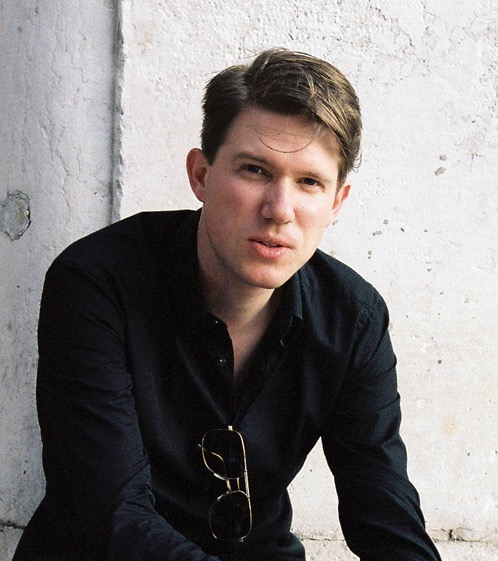Inside and outside are merged by permeable and revolving wall elements, while three-dimensional structures and two-dimensional graphics overlay. The project serves as a trial for larger scale housing projects, the first one opening in Shanghai by April next year.
Size does matter – at least in habitation. As space is becoming increasingly scarce in big cities, new approaches are needed both in the organisation and utilisation of the urban environment. ‘We believe that the housing market is too rigid,’ says Oke Hauser, Creative Lead at MINI LIVING. Since 2016, the car brand has expanded into the field of architecture by exploring new ways to use existing space more creatively and play with the fluidity of private and public space.

Downsizing the dimensions does not necessarily diminish the scope. On the contrary, a series of urban cabins allows the activation of unused urban areas through playful interaction. MINI LIVING’s first micro living unit was designed 2017 in cooperation with British architect Sam Jacobs, and occupied the place between two brick buildings in London. In the same year, MINI LIVING mounted a housing unit on a courtyard in Brooklyn with New York architecture firm Bureau V. The third cabin was presented in June 2018 on the rooftop of a former factory building in downtown LA. In this case, local-based architecture firm FreelandBuck had been commissioned to design a specific experience room in the 15-m2 house.
'One of the most interesting things about LA is, that the city is constantly under construction. When you drive around you always see framed buildings that do not have the outside yet,’ says David Freeland, who co-founded his office with Brennan Buck in 2009.

The ideas of openness and incompleteness are taken up in the experience room that connects the bedroom area on the one side, and the kitchen and bathroom area on the other. A metal frame structure is clearly visible from in the inside. The architects took images of the structure, distorted the perspectives on the computer, and printed these images on the polycarbonate panels outside.
’We are interested in the relation between the conventional three-dimensional idea of architecture and the two-dimensional way that surfaces are articulated. It is a mixing of different spatial sensibilities, one real and the other implied,’ Freeland points out. The facades of the bedroom, kitchen and bathroom are covered with perforated metal sheets, giving a constant feeling of being outside while inside. During the night they let the cabin glow while natural sunlight comes in during daytime. The interior walls define a wide-meshed grid with large holes, allowing shelves and other furnishing objects to be plugged into the spaces.

The metal-frame structure is overlaid with images printed on polycarbonate panels.
'These elements can be moved to effortlessly and playfully adapt the entire interior layout to your needs. You can turn some parts of the walls to the outside to give them a new function or share them with your surroundings,’ explains Corinna Natter, who is responsible for the design of the Urban Cabins at MINI LIVING. One rotating wall panel creates a table, again, half inside and outside. The bed can be pushed out to serve as an open-air sofa during the day. All rooms can be opened up to invite the public in. At the same time, they can be locked up in order to preserve privacy.

A rotating wall panel in the bedroom transforms itself into a table, half inside, half outside.
Later this year, two different urban cabins will be opened, one in Beijing during House Vision in September and the other at Designart Tokyo in October. While a serial production is not planned yet, the inhabitable cabins serve as intermediate links between the explorative installations MINI LIVING has showcased over the last few years at major design fairs, and larger scale residential projects that are currently being developed. The kick-off will be in April next year in Shanghai, where a former paint factory is being transformed into a mixed-use building with 50 housing units, workspaces and various cultural uses. ’Sharing of housing is certainly not a new invention. But previously it had been born out of necessity.

The wooden wall panels in the interior define a grid with large holes to plug in shelves and other objects.
'Now there are whole generations who have grown up with the sharing economy and the sharing idea. But they cannot find the right offers in housing,’ states Hauser – Creative Lead of the initiative who worked in the offices of Rem Koolhaas and Herzog & de Meuron before joining MINI LIVING. The co-living concept is aimed at urban nomads who can rent a place for at least one month and stay as long as they want. The inhabitants will be able to configure the apartment design by choosing between different furnishing elements and colour schemes.
While the size of the apartments will be relatively small, the boundaries between private and public become porous. In Shanghai, four to eight units will share a common area. If people want to meet with friends, they can rent additional rooms temporarily. ‘We started thinking about small spaces with the urban cabins. In our real housing projects, small space becomes the base that can be expanded indefinitely. There is a lot of potential in this flexible understanding of architecture,’ believes Hauser.
The message is clear: it is not the size of space that matters anymore. It is what you make out of it.
MINI LIVING’s LA Urban Cabin was installed on the occasion of the LA Design Festival, which took place from 7 to 10 June 2018
 David Freeland (FreelandBuck, architect), Oke Hauser and Corinna Natter (both MINI LIVING)
David Freeland (FreelandBuck, architect), Oke Hauser and Corinna Natter (both MINI LIVING)


